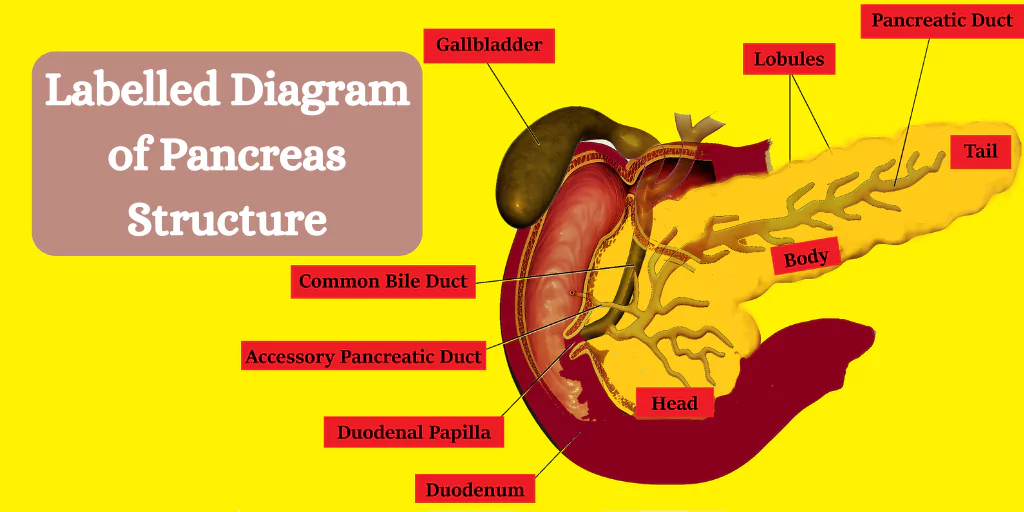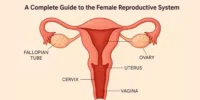The pancreas is an important glandular organ located in the abdomen that performs both endocrine and exocrine activities. It produces vital hormones such as insulin and digestive enzymes, which aid in the breakdown of food. The diagram of pancreas helps illustrate its structural organisation, which includes four main parts: the head, neck, body, and tail. Each region has a distinct role in regulating digestion and hormonal balance. This article uses a labelled diagram of the pancreas to walk readers through its anatomical structure and physiological activities.
Location of the Pancreas
The pancreas is located beneath the stomach, between the duodenum (initial part of the small intestine) and the spleen. It is retroperitoneal, which means it rests behind the peritoneum.
Labelled Diagram of Pancreas
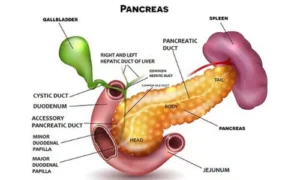
Parts of the Pancreas
1. Head
- The broadest part
- Located in the curve of the duodenum
- Contains the major pancreatic duct (duct of Wirsung) and often the accessory duct (duct of Santorini)
2. Neck
- Connects the head to the body
- Lies in front of the superior mesenteric vessels
3. Body
- Elongated central part
- Lies behind the stomach
- Contains many pancreatic islets (Islets of Langerhans)
4. Tail
- Tapered left end near the spleen
- Rich in endocrine tissue, especially insulin-producing beta cells
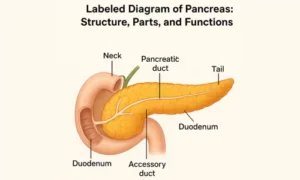
Duct System of the Pancreas
- Main Pancreatic Duct (Duct of Wirsung)
Carries digestive enzymes to the duodenum via the major duodenal papilla. - Accessory Pancreatic Duct (Duct of Santorini)
Sometimes present; drains into the duodenum via the minor duodenal papilla.
Functional Divisions
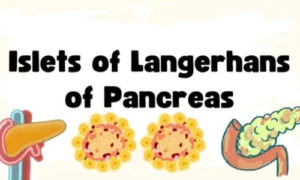
1. Exocrine Pancreas (Acini)
- Produces digestive enzymes: amylase, lipase, trypsin
- Secretes into the duodenum through ducts
2. Endocrine Pancreas (Islets of Langerhans)
Produces hormones:
- Insulin (β cells)
- Glucagon (α cells)
- Somatostatin (δ cells)
- Pancreatic polypeptide (PP cells)
Clinical Relevance
- Pancreatitis: Inflammation of the pancreas
- Diabetes Mellitus: Caused by a malfunction in insulin production
- Pancreatic Cancer: Often starts in the head and affects bile drainage
Conclusion
The pancreas is a complicated organ with multiple functions that are essential for digestion and hormonal homeostasis. Understanding its structure (head, neck, body, and tail), as well as its duct system and endocrine/exocrine functions, aids comprehension of a variety of physiological and therapeutic issues.


